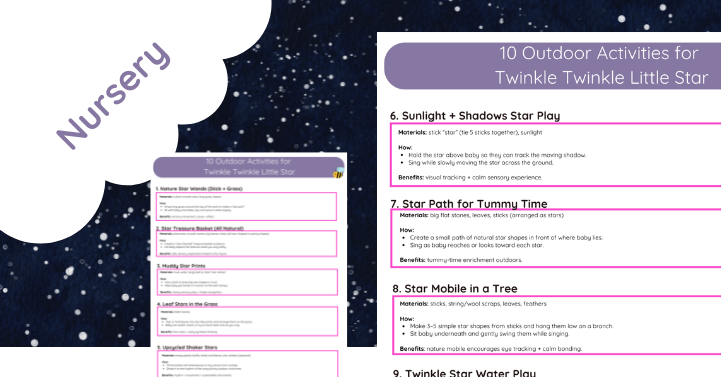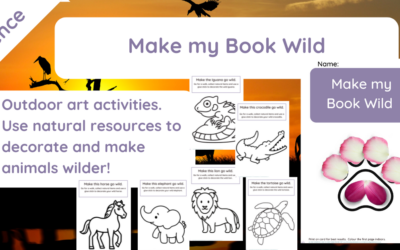Nature Craft Christmas Templates – Outdoor Festive Fun! Product Description: Bring the magic of Christmas and the...
24 Nature Crafts for Advent
Nov 14, 2024
24 Nature Crafts for Advent: A Journey of Creativity and Connection Celebrate the season with "24 Nature Crafts for...
Fireworks Ideas for Toddlers
Nov 4, 2024
Fireworks Ideas for Toddlers Using the Muddy Puddle Teacher (MPT) Approach Make this Bonfire Night memorable and safe...
My Wildest Wild Book
Mar 28, 2024
What does this resource include? 6 x full-page art activities 1 x Book per child How can I use this resource? Use...
Tree Faces
Apr 28, 2023
The Benefits of Making Tree Faces Making tree faces is a delightful and creative outdoor activity that engages...
Outdoor Art Frames A3
Apr 28, 2023
What does this resource include? Instruction into how to use your muddy frame A3 1 x Outdoor Art Frame How can I use...
Outdoor Frames for Art
Apr 26, 2023
What does this resource include? Instruction in how to use 1 x Outdoor Frame How can I use this resource? Cut the...
Nature Sunflowers (Art Task)
Mar 8, 2022
Use this fantastic resource to create some Nature Sunflowers (Art Task). The children use natural resources and this...
Make a Nature Heart
Feb 9, 2022
Design a Wellington Boot
Jan 27, 2022
Design a wellington Boot, Use natural resources Get wellies in and decorate them, link it to DT and Science
Mud Kitchen: Cracking Conker Silly Soup Recipe
Sep 10, 2021
Mud Kitchen: Cracking Conker Soup ⇒Use the Mud Kitchen: Cracking Conker Soup from the Silly Soup range to help...
Autumn Colour Spotter Sheet Activity
Jan 22, 2021
Use the Autumn Colour Spotter Activity Sheet to get the children outside applying their maths while they connect with...
Summer Colour Spotter Activity Sheet
Jan 22, 2021
Use the Summer Colour Spotter Activity Sheet to get the children outside applying their maths while they connect with...
Spring Spotter Activity Sheet
Jan 22, 2021
Use the Spring Spotter Activity Sheet to get the children outside applying their maths while they connect with nature...
Winter Colours Art Activity Sheet
Jan 21, 2021
Use the fabulous Winter Colours Art Activity Sheet to get the children outside applying their maths while they connect...
Winter Colour Spotter Activity Sheet
Jan 21, 2021
Use the mud-tastic Winter Colour Spotter Sheet to get the children outside applying their maths while tey connect with...
Pine Cones Bird Feeders
Jan 6, 2021
Pine Cone Feeders In a nutshell: Use Pine Cones Feeders to help support the learning at home through using natural,...
Crafting with upcycled materials
Dec 2, 2020
Use Crafting with upcycled materials to appreciate the joys and creativity that can be gained from your junk. It is a...
New In

10 Outdoor Activity Ideas for Wheels on the Bus

10 Outdoor Activities for Incy Wincy Spider

10 Outdoor Hey Diddle Diddle Activity Ideas

10 Outdoor Activities for Twinkle Twinkle Little Star

Outdoor Lullaby Activities for Babies

10 Outdoor Mother Goose Nursery Rhyme Activities

20 Cinderella Outdoor Learning Activities

Meet the Weather by Caryl Hart (20 Outdoor Activities)

20 Amazing Outdoor STEM Ideas for Toddlers




















